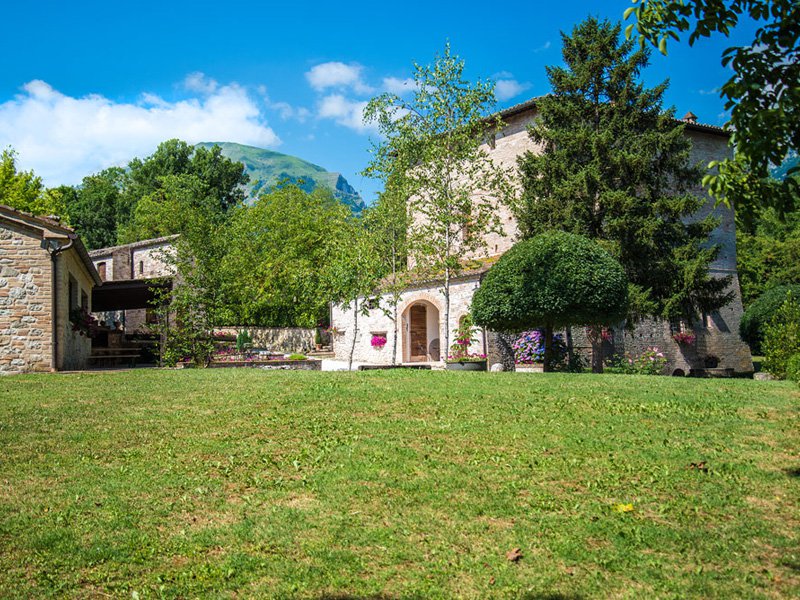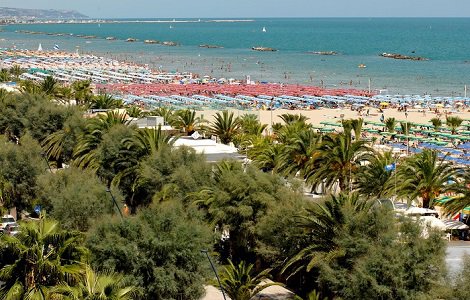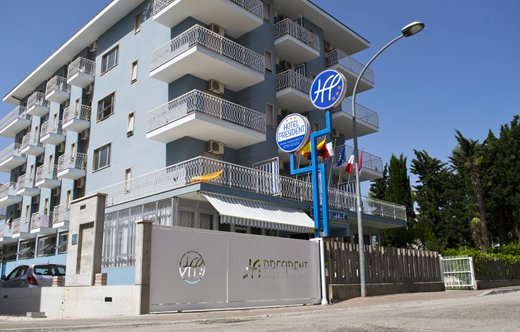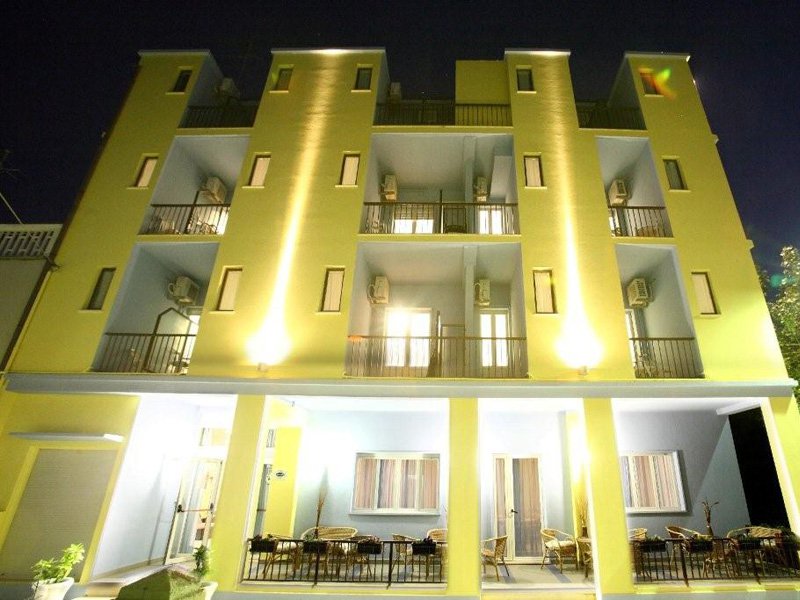Find out Montefortino
Notice
The information below was written before the earthquake of 26.08.2016.
Info
The city of Montefortino is perched on the side of a hill, on top of which stands a church, and is surrounded by the highest peaks of the Sibillini Mountains. The natural scenery that is presented to visitors is very suggestive and of great beauty. The economy of Montefortino owes much to nature which has transformed tourism into its most important resource. This is accompanied by agriculture and pastoralism. Do not forget the gastronomic traditions and the typical dishes based on wild boar and lamb, without forgetting the products of the forest, such as truffles (black and white) and mushrooms, and the exploitation of mineral water springs.
To be seen
Church of San Francesco or Santa Maria del Girone
The church (in Romanesque-Gothic style) stands on the top of the hill where in the 17th century. XIV stood the fortress of the city. In 1444 the fortress was demolished leaving intact only the chapel dedicated to S. Maria del Girone. In the following centuries, the church of S. Francesco and the convent occupied by the Franciscan friars (now destroyed) were built.
Palazzo Leopardi - Duranti Art Gallery
The building, of noble architecture sixteenth century, belonged to a branch of the family of the well-known poet. Inside is the Civic Art Gallery, named after Fortunato Duranti (1791-1863). Extravagant character with a troubled life, painter and antiquarian, passionate collector, he bequeathed to the city many works (about 150 but originally they were more than double) ranging from the fourteenth to the seventeenth century.
The building of the city it has other buildings rich in history (Palazzo Spagnoli, Palazzo Mercuri) including several tower-houses from the 16th-17th century.
Church of Sant' Andrea
The building was built at the beginning of the fifteenth century and was restructured in the seventeenth century.
Church of San Michele Arcangelo
The church, in neoclassical style, was built approximately in the mid-nineteenth century. Inside there are two wooden altars, in Baroque style, from the church of Sant' Andrea.
Church of Sant'Agostino
The church consists of a single nave and would date back to around the 14th century. The interior was restored in the 16th century; during some of these last works some frescoes, probably from the 14th-15th century, have come to light. Also in the fourteenth century a convent was built, closed in the sec. XVII, of which part of the portico remains.
Church of the Madonna della Fonte
The plant, in the shape of a Greek cross, is located outside the town and was built in 1647 with the name of Santa Maria delle Grazie.
Church of the Madonna della Pace
Built in the XIII century. after reaching a truce with the city of Amandola, it was restored in the 17th century.
Church of San' Angelo in Montespino
The church (perhaps built by the Lombards in the 6th- VII) in the X-XI century it was guarded by the Farfensi monks. Internally it was restructured several times and retains a crypt, formed by small naves.
Sanctuary of the Madonna dell'Ambro
It was built in the 17th century. XVI, around a chapel built following the apparition of the Virgin to a shepherdess named Santina, who, mute since birth, regained her speech. The decorations date back to the century. XVII and in the chapel of the apparition the statue of the Virgin with Child, placed here in 1562, is venerated.
Hermitage of San Leonardo al Volubrio
The hermitage is located along a path excursion that from the Infernaccio Gorge leads to some of the peaks of the Sibillini Mountains. It belonged to the Benedictine monks linked to the monastery of Fonte Avellana (PS) and then passed to the Camaldolese. The church and hermitage were then restructured and recently rebuilt by a Capuchin father.
History
As evidenced by an ancient plaque, coming from the Girone fortress destroyed in 1442, the history of Montefortino dates back to Roman times. Its territory was included in the Augustan centuriation of the 15th century BC. which included Sarnano, Amandola and Montemonaco. In 1084 it became a free municipality, giving itself its own statute, modified in 1126. In the thirteenth century it was subjected to the lords of Monte Passillo di Comunanza and was among the possessions of Fermo; around the middle of the fifteenth century it passed into the hands of the lords of Camerino. In 1860 he voted for the annexation to the kingdom of Italy of Vittorio Emanuele II.
Manifestations
Festival of the True Truffle of the Sibillini Mountains - February
Popular festival of the Sibillini Mountains - July




